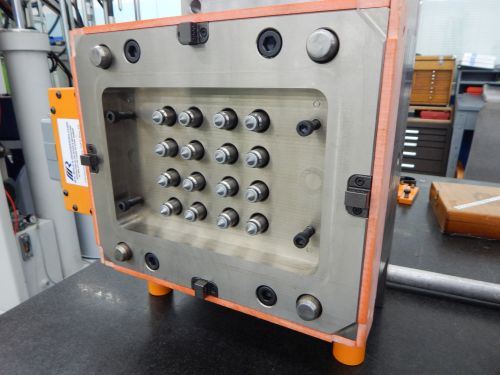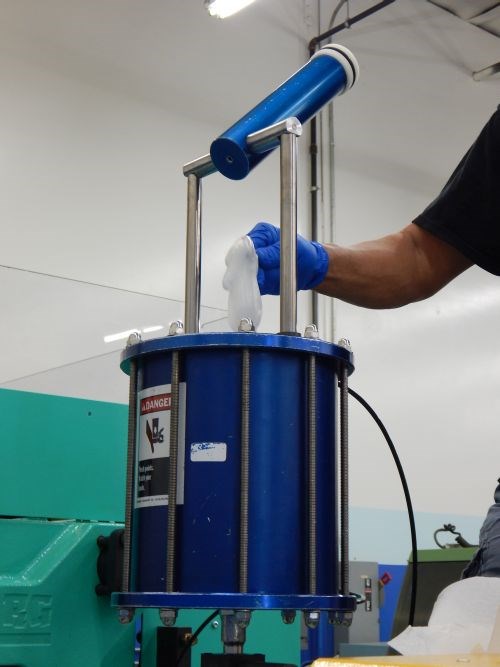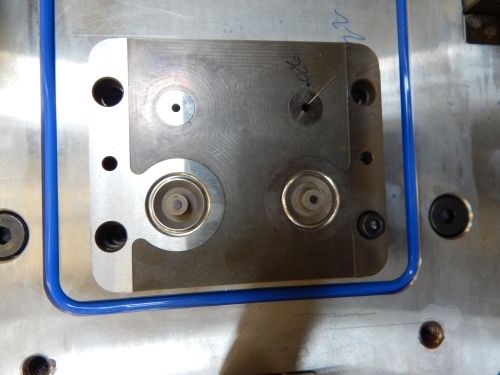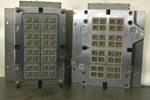A Mold Shop OEM
Years of helping customers save time and money in liquid silicone rubber (LSR)—a material that involves very different considerations from plastics—has led this shop to develop its own product line.
As detailed in this feature article, molding liquid silicone rubber (LSR) requires a completely different mindset from molding plastic. The same goes for manufacturing the tooling. Different enough, in fact, that a shop focused mostly on this niche day-in and day-out is more likely to develop its own innovative methods of saving time and money for customers.
So says Rick Finnie, president of M.R. Mold & Engineering, a Brea, California-based shop that thrives on decades of experience in LSR. Over the years, the shop has parlayed many time- and cost-saving strategies into its own line of specialty equipment, some of which it even sells to competitors. The line includes the following:
*Pneumatic Stuffer Box. Changing to different LSR grades in prototyping, short-run and micro-molding applications typically requires breaking down and cleaning the pumping unit on the press, a time-consuming task when seconds count. As an alternative, the shop offers pneumatic stuffer boxes in various sizes and pressure ratings. Customers mold one material, detach the stuffer, place it in the fridge for the next use, and move on to the next material. This can significantly reduce changeover times, Finnie says, and the stuffer box’s single cylinder is easier to clean.
*Universal Base. Also designed with changeovers in mind, this system keeps costs low by enabling customers to swap out interchangeable inserts instead of the entire tool.
*Vacuum Seals. M.R. Mold manufactures and markets its own tapered, hollow-body silicone parting-line seals in increments of 50 feet.
*Cold runner system. From the very outset of M.R. Mold’s journey into LSR, off-the-shelf cold runner manifolds have been more difficult to find than hot runners, and customers often complained about them anyway, Finnie says. So, the company developed its own cold deck. Available in open-nozzle as well as valve-gated configurations, this system is a portable, self-contained assembly that can be re-used for multiple jobs.
*End-of-arm tooling. Given the challenges of de-molding LSR and the fact that every job is different, designing and building end-of-arm tooling has long been commonplace at M.R. Mold. Knock-out pins, various types of mold sweeps, various types of grippers—all are common here, Finnie says. Deciding on the best solution for the job is typically a lengthy process involving significant trial-and-error and back-and-forth with the customer.
*Custom integral robot. Years of working on creative ejection solutions led M.R. Mold to recognize an opportunity to develop its own robot, one designed specifically to be customized for LSR applications. Described by Finnie as a "relatively simple" system, the single-axis robot can incorporate a wide range of the aforementioned end-of-arm tooling. Mounting to the top of the mold or to the press, it is available in both hydraulic and pneumatic configurations and in both sweep and grip/push/release styles.
Related Content
-
An Integrated Desktop Approach to Mold Production
Versatile, scalable, additive machining and molding systems optimize moldmaking operations and support training initiatives.
-
How to Implement a Remote Validation Process
A review of the setup and use of a remote mold validation kit.
-
Cube Mold Technology Advancing Injection Molding
Injection mold design features a central rotating cube that can split and counter-rotate, with additional gear elements on the exterior.


















